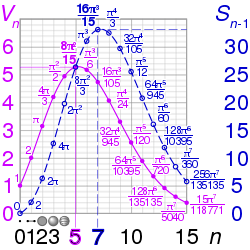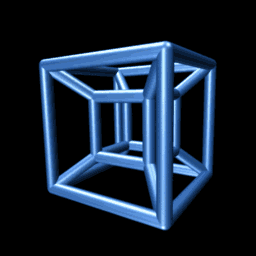Hypersphere

In geometry of higher dimensions, a hypersphere is the set of points at a constant distance from a given point called its centre. It is a manifold of codimension one—that is, with one dimension less than that of the ambient space.
As the hypershere's radius increases, its curvature decreases. In the limit, a hypersphere approaches the zero curvature of a hyperplane. Hyperplanes and hyperspheres are examples of hypersurfaces.
The term hypersphere was introduced by Duncan Sommerville in his discussion of models for non-Euclidean geometry.[1] The first one mentioned is a 3-sphere in four dimensions.
Some spheres are not hyperspheres: If S is a sphere in Em where m < n, and the space has n dimensions, then S is not a hypersphere. Similarly, any n-sphere in a proper flat is not a hypersphere. For example, a circle is not a hypersphere in three-dimensional space, but it is a hypersphere in the plane.
References
- ↑ Sommerville, D. M. Y. (1914). "'Space Curvature' and the Philosophical Bearing of Non-Euclidean Geometry" (PDF). In Milne, William P. The Elements of Non-Euclidean Geometry. Bell's Mathematical Series for Schools and Colleges. London: G. Bell and Sons. p. 193 – via University of Michigan Historical Math Collection.
Further reading
- Kazuyuki Enomoto (2013) Review of an article in International Electronic Journal of Geometry.MR 3125833
- Jemal Guven (2013) "Confining spheres in hyperspheres", Journal of Physics A 46:135201, doi:10.1088/1751-8113/46/13/135201
